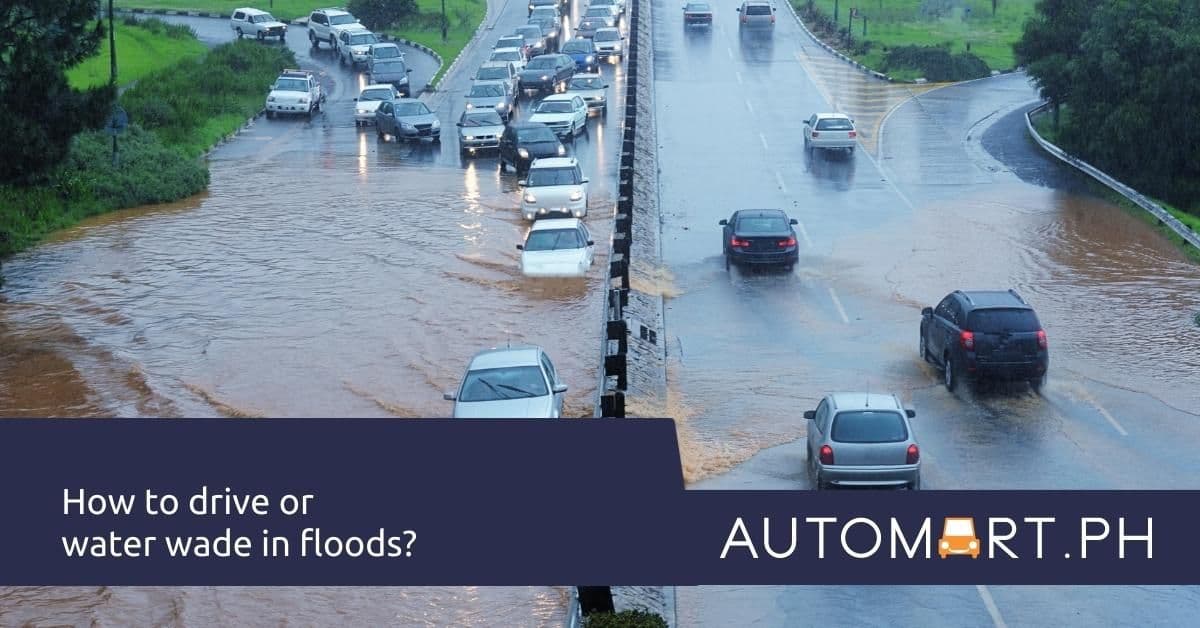
How to drive of water wade in floods?
Updated on December 17 2025
By:Ricardo S. Lazo, for Automart.ph
Rainy season, heavy downpours, and thunderstorms can cause flooding. Wading through floods is no fun but risky. A thick flood can wreak havoc on cars. Let Automart guide you in crossing flooded roadways safely.
Is it bad to drive across floods? As little as 6 inches of water can hit the bottom of the car which can cause you to lose control and leave you immobile. Higher water will be more dangerous. Your tires can act as a flotation device. Hence, it’s not recommended to drive through floods or deeper above the center of the vehicle.
Standard Rule
The safest approach to driving in floods is “not to do it at all.“ Try to avoid flooded areas. If you see water on the road and are unsure of its depth, just turn around; it can be much deeper than it looks. Collect your concentration; wait for the condition to clear and find a safe place to park up.
If the travel is necessary, check alternative routes and proceed but be informed of weather updates to know about flooded areas or closed roads. Use your mobile app to determine alternative routes and keep an emergency number.
Tips to drive safely in floods
Caught unexpectedly in floods? Whatever type of car you’re driving, if the water level exceeds the tire’s center cap, it will be very risky. Whenever the situation is unavoidable, here are some tips to help you drive through safely.
- In heavy rains, turn your headlights on. A full downpour can minimize visibility. Head/tail lights give other motorists the best chance to see your car and maximize visibility in low lights.
- Drive down the center. The flood tends to be shallowest at the center. Forget about road lines. Keep a steady pace and don’t take off your foot on the accelerator as water may flood the engine.
- Drive slowly about 1-2 km/h and take turns with other vehicles. Gradually increase whenever feasible. This pacing minimizes the water to enter the engine or damage the electrical parts. Easing on a flood gives a “bow wave” in front and water depression level.
- Drive in low gear. Drive in first or second gear to protect the vehicle at low speed. Keep your foot on the pedal and release only to advance.
- Once it recedes, gently apply brakes to dry them. It may help remove the debris collected in the rotors but release it when it starts to contrast. Pull over to a safe side. Allow the engine to idle for about a few minutes and inspect the compartment.
Final Thoughts
While most cars are vulnerable to flood damage and can float at 23 inches of water; there are vehicles like pickup trucks or some SUVs that have impressive capabilities that give added safeguards in water wading up to 30 inches deep. Nonetheless, they aren’t watertight in extreme flooding, with water gushing forth. To be safe, all vehicles must avoid moving water as it’s extremely dangerous.
Hence, a defensive driver is safer than a careless one. Keep yourself, your passengers, and your vehicle out of trouble during flooding. Though some journeys are necessary; be smart whether you really need to drive through the water or stay out of the road for your own safety as prevention is definitely the rule.